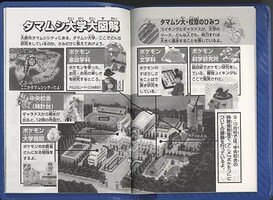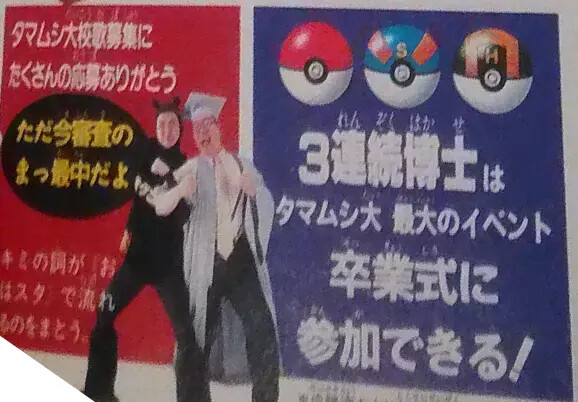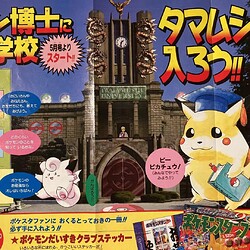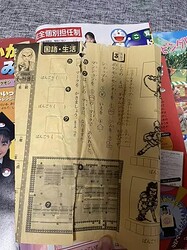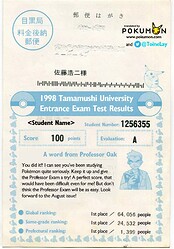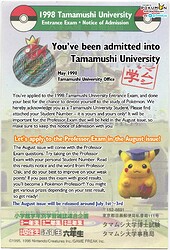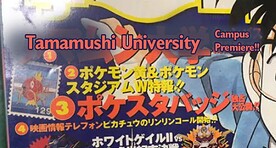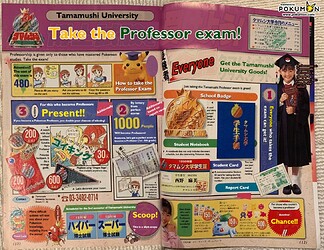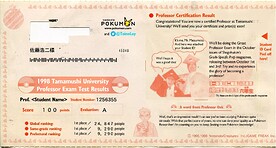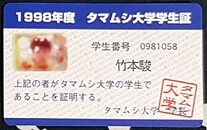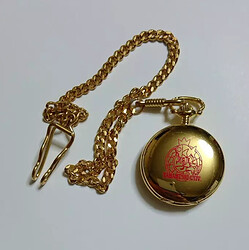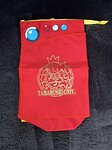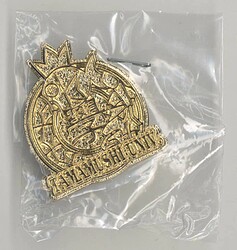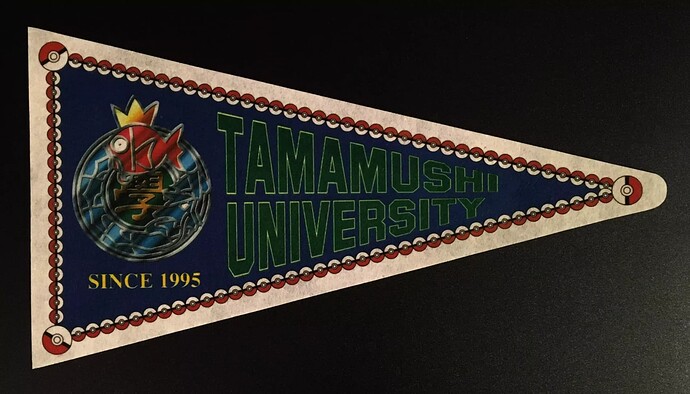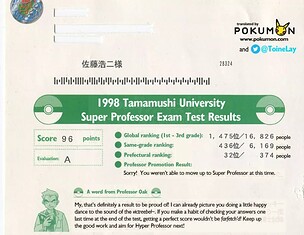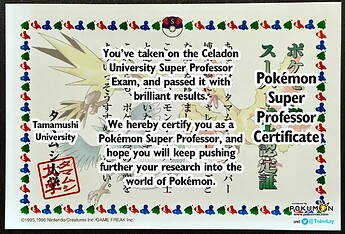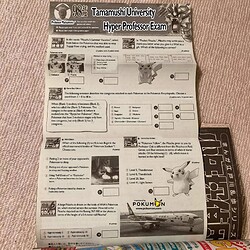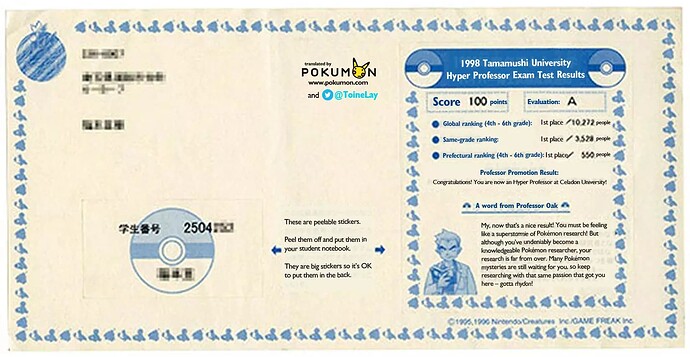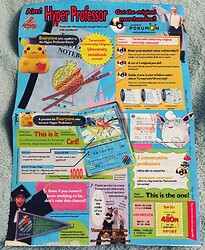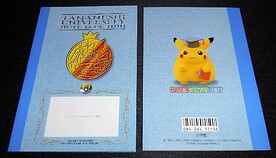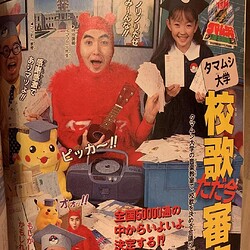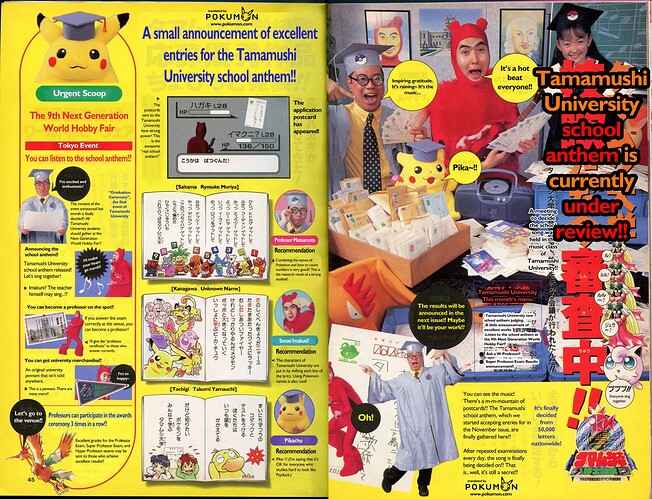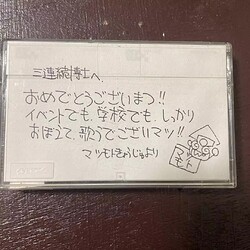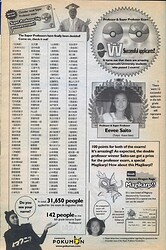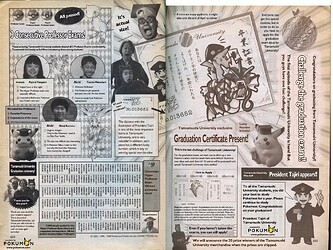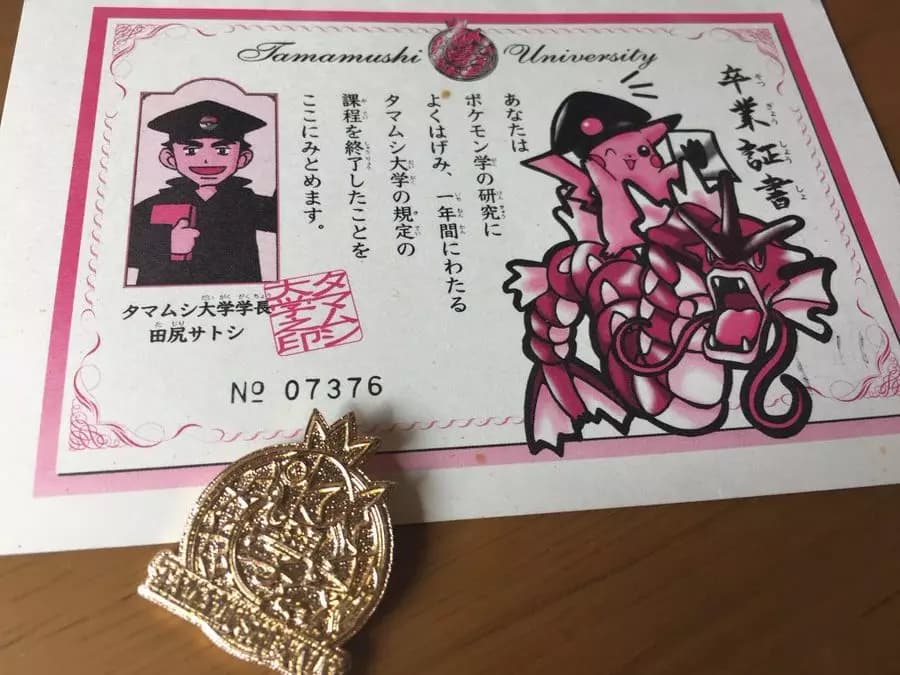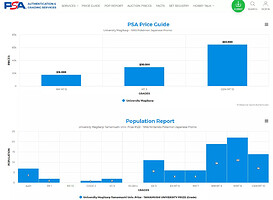After quite some time and some major help from various members of the community (shoutouts to @augustdifirenze , @prochaos , @KEI , @Kampes_Cards , @linkdu83, and many more who helped me gather materials), I am finally ready to call this article about the famous “University Magikarp” complete. The full article is linked below and includes full-resolution images and translations, but I’ve also included a summary of each month in the year-long(!) campaign:
Tamamushi University Magikarp
In the spring of 1998, a promotional campaign featuring Magikarp was launched. Starting from March 1998, school children in Japan were given the opportunity to “enroll” in a fictional university, Tamamushi (Celadon) University (タマムシ大学). Through various mail-in exams, they could win prizes ranging from school supplies, cosmetic badges, and most famously, a promotional Magikarp Pokemon TCG card.
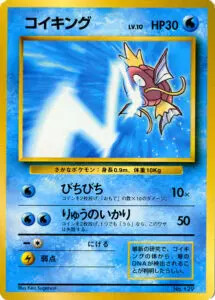
Tamamushi City
Tamamushi City, known in English as Celadon City, was a town in the Pokemon video games. A fictional university was created for the campaign, known as Tamamushi University. The university does not directly appear in the games as an accessible location, but it is referenced a few times throughout the anime and manga after the campaign had concluded.
Examinees started out by taking the entrance exam to become. During successive months, they would then take the Professor exam, Super (Great) Professor Exam, and finally the Hyper (Ultra) Professor exam. Each of these professor “levels” was a reference to the 3 tiers of Poke Balls from the video games: Poke Ball, Super Ball (Great Ball), and Hyper Ball (Ultra Ball).
April 1998 - Introduction to Tamamushi University
The April 1998 issues of the magazines introduced the Tamamushi University campaign to readers with a color spread “photo” of the main University building. The introduction issue didn’t have any actual activities for readers, but did instruct them to stay tuned for things to come in next month’s issue.
May 1998 - Entrance Exam
The May 1998 issues of the grade-specific magazines introduced Tamamushi’s first activity: an entrance exam. Exams were on cheaper tear-out paper that was meant to be mailed back to Shogakukan for evaluation. The issue also included some more information about the fictional university.
Different grades got different sets of questions. For example, in the 1st grade question above, the reader is asked to identify three buildings on the map of Celadon City by drawing the corresponding symbol in each square. There’s a footnote saying each is worth 5 points, with the question being worth 15 points in total.
Exam questions for the entrance exam were mostly pictorial in nature, such as “arithmetic” where readers had to calculate the number of legs on a Pokemon based on its picture.
After mailing in the exams, readers would receive a postcard with their score result. Everyone who received a perfect score would be tied for 1st place, while imperfect scores would be given a numerical ranking.
Along with their entrance exam results was a welcome letter to Tamamushi University, and instructions on when the next exam (the Professor exam) would be available.
June - July 1998 - Campus Tour & more
In the June issue, the grade-specific magazines featured a Tamamushi Campus tour, mock exams, and “Tamamushi Drills”. The last feature was probably some kind of exercise / study guide for the upcoming exams.
The July issue of the magazine also included more mock exams and drills to help students prepare for the Professor Exam in August’s issue.
August 1998 - Professor Exam
The August issue was published in early July, and marked the halfway point in the campaign, known as the “1st semester”. True to reality, the end of the 1st semester included an exam, the Tamamushi University’s Professor exam.
This exam was more difficult than the entrance exam, but examinees who passed it would receive a Professor certificate. The exam itself had many problems that could be solved by looking at past issues of the magazine. All examinees who took the exam would get a metal school badge pin, student notebook, student ID card, and a results slip.
The August issue also announced a lottery for 1000 examinees who had achieved perfect scores on the Professor exam. Prizes for this lottery included exclusive Tamamushi University merchandise: A pocket watch, a backpack, and a school pennant.
September 1998 - Super (Great) Professor Exam
The September issue held the Super Professor Exam (also known as the “Great” Professor exam if you translate it to the English Poke Ball names). This exam was more difficult than the previous, and Professor oak brought in another professor named Matsumoto to give readers tips.
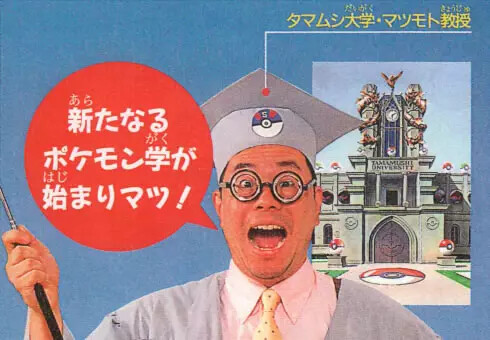
November 1998 - Preview problems & interviews
This issue of the grade-specific magazines featured interviews with various Pokemon winners. This included the Nintendo cup winner, Mario 64 Stadium TV channel winner, and Pokemon Card tournament winners. It also featured these winners previewing some possible questions for the upcoming Hyper Professor exam.
December 1998 - Hyper (Ultra) Professor Exam
The final issue of 1998’s grade-specific magazines contained the Hyper Professor Exam. This was the final, and most difficult exam of the Tamamushi University campaign. Like the previous Super Professor exam, examinees didn’t need to have passed the previous exams to participate.
This is the exam that awarded the well-known Magikarp promo card, though it differs significantly from its “preview” image.
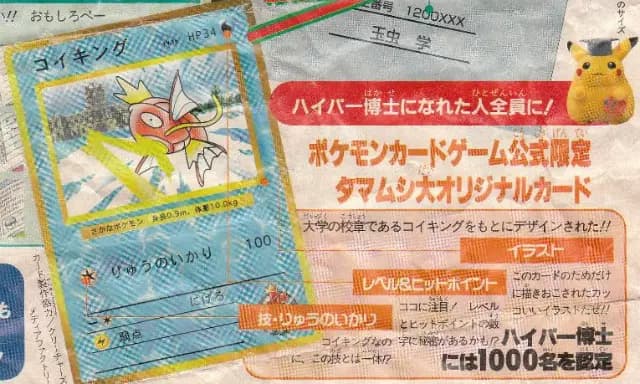
All entrants would receive more school-related prizes as described here
In particular, this notebook shed a lot of light on the fictional university. To read full translations, click here
Jan - Feb 1999 - School Anthem
After the Hyper Professor exam, the next two issues of the grade-specific magazines recapped the events of 1998, and also began the finalization of the Tamamushi anthem.
The January issue would announce that the selection for the school anthem was under review, and also highlight 3 recommended entries. The school anthem would be revealed at the 9th Next Generation World Hobby Fair, held in Tokyo from December 12, 1998 – January 24, 1999. It also revealed that special Tamamushi University merchandise like a special pennant would be given away at the event.
Eventually, this school anthem would be given away via cassette tape to random winners, likely at the 9th Next Generation World Hobby Fair. At least one such tape was personally signed by Matsumoto.
The January issue of the magazines would also include a study guide for the Hyper Professor Exam that was announced in the previous issue, and as well as the announcement of the Super Professor Exam winners.
March 1999 - Graduation Exam
The final stage of the campaign was the graduation exam. Like the previous exams, participants did not need to have passed all the previous exams to participate in the event.
The graduation exam was structured very differently than the previous Entrance Exam and 3 Professor exams. Instead of answering a series of Pokemon-themed questions, examinees would have to illustrate a Pokemon using a brand-new attack on the back of a postcard and mail it in.
Each certificate would be issued with a unique number. This number was used was used a lottery number for entrants to also receive special Tamamushi University merchandise. 10 winners would be selected by Shogakukan’s editorial department, and 10 winners would be selected by lottery for a total of 20 winners.
Summing things up
The Tamamushi campaign was unique in both its longevity and execution. To date, Pokemon has never repeated something similar to it. It was one of the most interactive Pokemon campaigns ever done, which is doubly impressive considering at the time the main way to reach its intended audience was mail and magazines.
The promotional Magikarp card issued during the campaign remains one of the most expensive promo cards, especially in higher grades. Due to its distribution, the card ended up in the hands of elementary school children, meaning that mint copies are quite expensive.
I want to once again thank everyone who helped me collect and gather the research material for this article. Much of this material only ever existed in printed media, and finding 20+ year old magazines meant for elementary schoolers is no small feat. It is a testament to how awesome the community is. For more history articles, you can read more at Articles - Pokumon
